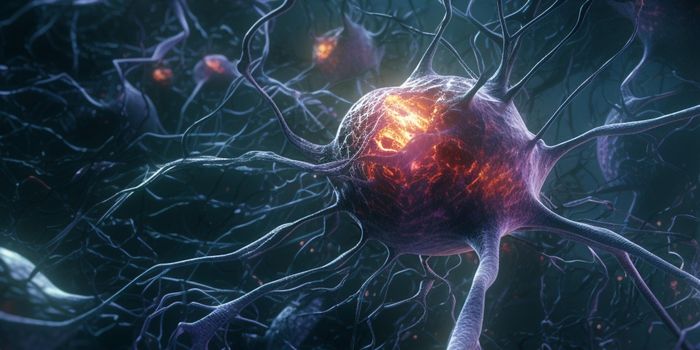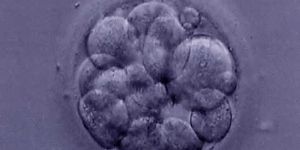Neuroscience
Penn Team Links Placental Marker of Prenatal Stress to Neurodevelopmental Problems
JUL 07, 2014 12:00 AM PDT
Share
Bringing Back A Species That Has Been Extinct for 100 Years. Is the Idea
 It's thought that in the 1800's the passenger pigeon (Ectopistes migratorius) was the most numerous bird in the world, with 3 to 5 billion birds making up 25% to 40% of the United States bird population. The migratory flights of the passenger pigeon were a true spectacle. Flying at about sixty miles per hour, flocks could darken the skies from morning to night for several days. Amazingly their numbers dwindled to one lone bird, "Martha," that died in 1914 at the Cincinnati Zoological Garden, making the species extinct.
It's thought that in the 1800's the passenger pigeon (Ectopistes migratorius) was the most numerous bird in the world, with 3 to 5 billion birds making up 25% to 40% of the United States bird population. The migratory flights of the passenger pigeon were a true spectacle. Flying at about sixty miles per hour, flocks could darken the skies from morning to night for several days. Amazingly their numbers dwindled to one lone bird, "Martha," that died in 1914 at the Cincinnati Zoological Garden, making the species extinct.The large flocks in which passenger pigeons lived together helped them survive, but also led to their destruction. "If you're unfortunate enough to be a species that concentrates in time and space, you make yourself very, very vulnerable," says Stanley Temple, a professor emeritus of conservation at the University of Wisconsin. Flocks could consist of hundreds of thousands of birds. They devoured foods found in the forests, such as acorns, beechnuts, chestnuts, seeds, berries, worms, and insects with their huge numbers making it impossible for predators such as hawks, foxes, and wolves to inflict much damage on the flock as a whole, a strategy known as "predator satiation." Nesting birds could take over whole forests, cracking branches and toppling trunks with their weight.
The pigeons became an important food source for humans. After stretching their food supply all winter, people on the frontier found the spring flocks a particularly welcomed source of protein. The flocks were so thick they were extremely easy to hunt. They could be easily netted or shot. Pots of burning sulfur were placed under the roosting trees where the fumes would daze the birds, causing them to fall to the ground. Just waving a pole at the low flying birds could kill some.
Still, hunting for personal consumption did not put huge dents in this bird's numbers. The real problem began when commercial hunting increased. The spread of the telegraph and railroads enabled this development. Professional hunters could get word about flocks' locations and get there quickly to hunt them. Then the birds could be packed into barrels and shipped by train to the large cities. The birds may have even survived commercial hunting if the hunters and settlers did not destroy large swaths of the forests the birds used for nesting, impairing their ability to reproduce.
While the reasons for the passenger pigeon's relatively rapid extinction seemed to be evident, molecular ecologist Hung Chih-Ming, a postdoctoral associate at National Taiwan Normal University and some colleagues had some doubts that hunting alone could have decimated the population. So, they gathered four museum species of the passenger pigeon from Indiana, Minnesota, and Pennsylvania, comparing their genetic sequences with the genome of the common pigeon (Columba livia). Assuming that the passenger pigeon's genome was roughly the same size as the common pigeon's, they concluded that they captured between 57 and 75 percent of the passenger pigeon's genetics.
They were then able to assess the extent to which the sequences of DNA code in the genes of the museum specimens varied from bird to bird. With this information, they could then estimate how big the population of passenger pigeons once was. Smaller populations typically will have less genetic variation because they derive from a smaller pool of ancestors. Hung and his colleagues concluded that the average population of breeding birds was about 330,000, dipping to as low as 50,000 at points in the last million years. This suggests that passenger pigeons may have been an "outbreak" species, that like locusts go through a boom and bust based on changes in conditions. As it turns out, this scenario matches well with the ecological modeling of the abundance or passenger pigeon food over the last few thousand years. Some simulations show a population crash for passenger pigeons about 21,000 years ago when glaciers buried trees that provided them with food, then a rebound about 6,000 years ago.
Now we know that the passenger pigeon's demise was likely not completely caused by human activity, but there is some hope that humans could bring them back. The San Francisco-based Long Now Foundation is leading an effort to explore reviving the extinct bird. Rapid advancements in genetic technology make this more than just a fantasy. George Church, a genomic engineer at Harvard Medical School has the idea to sequence the passenger pigeon and its closest living relative, the band-tailed pigeon (Patagioenas fasciata), compare their genomes, and then gene by gene (trait by trait) transform the band-tailed genome into that of a passenger pigeon. His lab has developed a technique called "Multiplex Automated Genome Engineering." He says, "You can take a piece of DNA out of your favorite organism, move it into e. coli, make a lot of changes-five changes every three hours, and then take that big piece of DNA and move it back. You can carefully craft the DNA in its normal place."
Of course, if being able to bring the passenger pigeon back ever becomes a reality there will be ethical, legal, and social issues that have to addressed. Some people will think it's wrong because scientists are "playing God." There are ecological risks, too, that come with reintroducing a species that hasn't existed in a hundred years. Some people will even argue that we will no longer make efforts to protect endangered species once we have the capability to bring them back. Although reintroducing extinct species is still a long way off, it will never be too early to begin the long discussion of how such a development would impact the world.
You May Also Like
Loading Comments...








